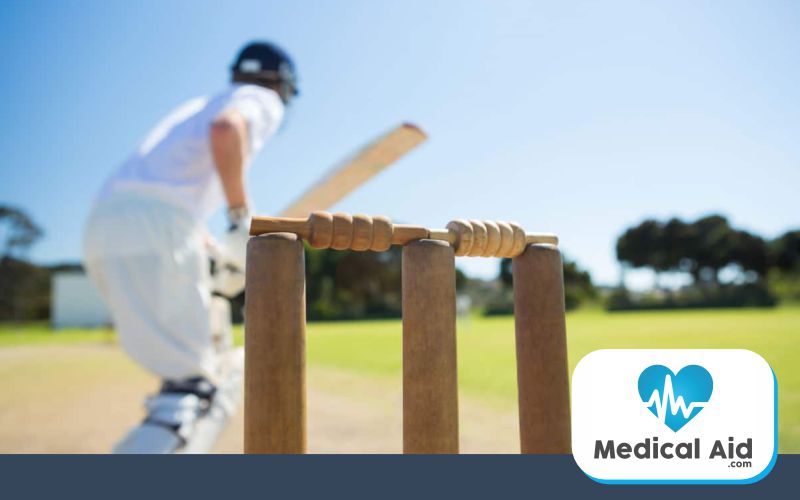Cricket is a sport cherished by many in South Africa, uniting people across generations. Whether playing on a casual weekend or competing at a professional level, cricket’s physical demands can lead to injuries that require medical attention.
For both kids and adults, the risk of injury in cricket underscores the importance of having adequate medical aid cover, so that any injury, from minor to severe, is promptly and effectively treated.
Common cricket injuries
Sprains and strains
Sprains and strains are some of the most frequent injuries in cricket, affecting players of all ages. A sprain typically occurs when ligaments are overstretched or torn, often during sudden movements such as changing direction while running between wickets.
Strains, on the other hand, involve muscles or tendons and are commonly seen in bowlers who place significant stress on their shoulders, backs, and arms. This makes it important to compare medical aids that cover treatment for such injuries.
Fractures
Cricket involves a hard ball that can travel at high speeds, particularly when bowled by a fast bowler or struck by a batsman. This can result in fractures, most commonly to the fingers, hands and forearms, but also potentially to the face if protective gear fails.
In kids, whose bones are still developing, fractures can be more severe and require specialised medical care. Look for benefits that will cover fracture treatments in children when you compare medical aids.
Overuse injuries
Overuse injuries, such as stress fractures or tendinitis, are common among cricket players who train frequently without adequate rest. These injuries are particularly prevalent in bowlers due to the repetitive nature of their actions. Overuse injuries require not only immediate treatment but also long-term rehabilitation, making medical aid an essential support system.
Knee injuries
The sudden stops and changes in direction that cricket demands can lead to knee injuries, including ligament tears and meniscus injuries. These injuries often require surgery and extensive rehabilitation, which can be costly without medical aid.
The role of medical aid in managing cricket injuries
Given the high risk of injury in cricket, having a robust medical aid plan in place is crucial for both kids and adults. In South Africa, medical aid schemes provide a safety net, covering the costs of medical consultations, emergency care, surgeries and rehabilitation. Without such coverage, the financial burden of treating cricket-related injuries could be substantial.
Emergency care
In the event of a serious injury, such as a fracture or concussion, immediate medical intervention is essential. Medical aid schemes mean that you can access top-quality emergency care without worrying about the costs.
Rehabilitation
Recovery from sports injuries often involves extended periods of physiotherapy and other rehabilitation services. Medical aid schemes typically offer comprehensive cover for these services, allowing injured players to focus on recovery rather than financial strain.
Specialist consultations
For injuries that require specialist intervention, such as orthopaedic surgery for a knee injury or neurological assessment for a concussion, medical aid plans provide access to the necessary expertise. This means that both kids and adults receive the best possible care, minimizing the long-term impact of injuries.
Concussions
Concussions are a serious concern in cricket, particularly in situations where a player is struck on the head by a ball or during fielding mishaps.
Concussions can lead to long-term cognitive issues if not properly treated. Immediate and thorough medical assessment is very important following any head injury, emphasising the need for comprehensive medical aid coverage.
Image: Supplied






